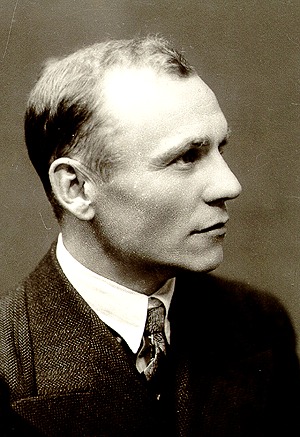Albert Kivikas facts for kids
Quick facts for kids
Albert Kivikas
|
|
|---|---|

Kivikas in 1930
|
|
| Born | 18 January 1898 Groß-St. Johannis, Governorate of Livonia, Russian Empire |
| Died | 19 May 1978 (aged 80) Lund, Sweden |
| Pen name | A.Pedajas, Mart Karus |
| Occupation | writer, journalist |
| Nationality | Estonian |
| Period | 1919 - 1963 |
| Subject | Estonian War of Independence |
| Literary movement | futurism, expressionism |
| Notable works | Names in Marble, Black Blood |
Albert Kivikas (born January 18, 1898, in Suure-Jaani, Russian Empire – died May 19, 1978, in Lund, Sweden) was an important Estonian writer and journalist. He is best known for his famous book Names in Marble (in Estonian, "Nimed marmortahvlil"). This book tells the story of the Estonian War of Independence.
Contents
About Albert Kivikas
Albert Kivikas was born in a town called Suure-Jaani. At that time, this area was part of the Russian Empire. His mother, Anu Kivikas, worked as a weaver.
Early Writings
When he was young, Albert Kivikas used different pen names for his writings. He sometimes published his work as A. Pedajas or Mart Karus.
War and Writing Style
Kivikas bravely volunteered and fought in the Estonian War of Independence. After the war, he became one of the few Estonian writers to try out new styles. He experimented with futurism, which was an art movement focused on speed, technology, and the future. He also explored expressionism, an art style that shows emotions rather than reality.
However, his most well-known works are novels and short stories. These stories often focused on war and the challenges faced by people in the countryside.
Life in Exile
From 1941 to 1944, Albert Kivikas was the leader of the Estonian Writers' Union. In the spring of 1944, during World War II, he had to leave Estonia. He first went to Finland. Later, in the autumn of 1944, he moved to Sweden. He lived in Sweden for the rest of his life.
Notable Works
Albert Kivikas is most famous for his novel Names in Marble. This book is a powerful story about the Estonian War of Independence. It helps readers understand the experiences of young people during that time. Another important work by him is Black Blood.
Images for kids


